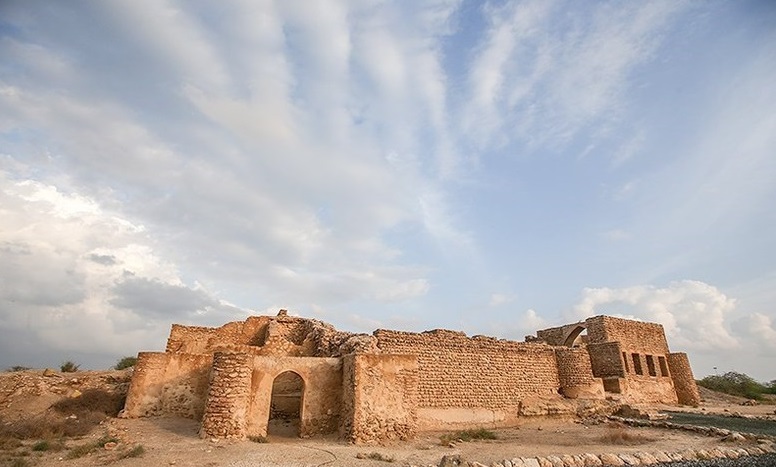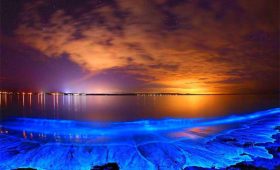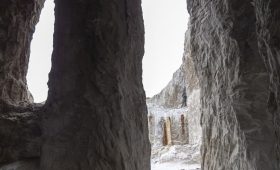If you decide to travel to the beautiful island of Kish, don’t miss the opportunity to visit the city of Harireh. This historical city is located in the north of the island and dates back to 800 years ago. Harireh was built in the 4th century AH and after the prosperity of the commercial port of Siraf, and in the past it has enjoyed a lot of prosperity. In such a way that it was considered one of the important commercial and commercial areas of the Persian Gulf. The ancient city of Harireh has different parts. Noble house, mosque, bathhouse, workshop and industrial sectors, water facilities and harbor are the sights of this historical city.
The historical city of Harireh is located in Hormozgan province and is considered one of the sights of Kish. This city is located in the north of this beautiful island. This city dates back to the 4th century AH, which was prosperous until the 10th century. The ancient city of Harireh is a reminder of the economic and commercial prosperity of Kish Island. The city of Harireh is mentioned in various historical sources.
The city built on Kish Island is very beautiful and surrounded by magnificent mansions and delightful gardens, and the ships that travel between India and the Persian Gulf stop there. There are several large reservoirs to store rainwater and five markets.
A city was built on Kish Island, that had a strong rampart and its water was obtained from many ponds, and it was a place for pearl fishing near the coast.
The ancient city of Harireh was considered as an important port and communication center between Iran, India and China and is more than 800 years old. This city was formed in the middle of the fourth Hijri century and was at its peak and flourishing for 500 years until the middle of the tenth century, and it was considered the center of trade and commerce in the Persian Gulf and had a large population.
With the decline of the port city of Siraf, the merchants of this region chose the island of Kish, which was called Qais at that time, for business and commercial activities, and the city of Harireh was formed. The coming to power of Bani Qaisar and Tayibi dynasty in Kish and Atabakan Selghari in Fars caused Harireh’s attention and prosperity.
The city of Harireh was rebuilt once during the Ilkhanid period and most of its buildings belong to this period. What remains is a reflection of its past glory. Harireh has been studied and explored by Iranian and foreign archaeologists over the years and different parts of it have been discovered.
The city of Harireh is located by the sea and on the shores of the Persian Gulf with an area of 120 hectares and consists of different spaces. The map of the ancient city of Harireh shows that it is a port. This city was built in the form of a castle and had towers and ramparts to prevent pirates from attacking.
Currently, the remains of the city of Harireh can be seen in the form of large stacks. In this city, there is not much trace of clay and brick, and shell fossils, limestone and coral stones have been used in the construction of buildings. The height of some of the buildings in Harireh city reaches more than 6 meters and this indicates the presence of floors.
A set of horizontal and underground channels and numerous wells can be seen in the corners of Harireh, whose function is not precisely known; but they were probably related to fishing activities such as fishing for fish, pearls and coral and were built for easier access to the sea.
The ancient city of Harireh has different sections and parts. According to the researches and the results of archaeological excavations, this city consists of a harbor, a noble house, a mosque, a bath, old aqueducts, industrial parts and a workshop such as a glass workshop.
The remains of Harireh city’s dock and anchorage can be seen near the beach, which has semi-circular supports and leads to the sea with several corridors, stone openings and stairs. The entrance and exit channels are still standing. Next to the harbor building, there is a building that the local people call Qasr. Wasaf’s writings also show that there was a high palace called Malek Jamshid Palace in Kish
The presence of a mosque in the city of Harireh indicates the presence and residence of Muslims. Harireh Mosque with an area of two thousand square meters is located in the center of this city. This mosque has Seljuk architecture and has been renovated in later periods. The nave, four altars, a tall minaret with a circular plan and a reservoir are its components. In addition to being a place of worship, Harireh Mosque was considered a place for gathering and part-time accommodation for traders.
Eyani’s house is one of the parts of Harireh that was discovered after archaeological excavations. This mansion is located 300 meters south of the beach complex and in the middle of the access road to the rocky beach in the north of the site. This house is reminiscent of the old houses in the cities of Yazd, Kashan and Isfahan, where several families lived together.
Harireh’s noble mansion includes the entrance, the king’s residence, a large house in the north and a small house in the south. A large number of pottery objects and wall decorations, including stucco and glazed tiles, belonging to the thirteenth and fourteenth centuries have been obtained from this mansion. The star tiles are similar to the ones found in Takht Suleiman and Soltanieh. These imported tiles show that this house belonged to one of the rich people of this city.
Hamam Shahr, with an area of 500 square meters, is located in the northwest of the noble house. This bath had three periods of construction, expansion and restoration and was built in two periods of Ilkhani and Timurid. This bathhouse includes a fence, several courtyards, a service department, a warehouse and a worker’s room in the northern part, a bathhouse, a greenhouse, a ton and two small and large treasures in the south of the greenhouse.
Due to the limited capacity of the bathroom and the external wall of the entire country that extends to the mansion complex; It seems that this was a private bathroom belonging to the owner of the noble complex. Harireh bath is also known as one of the oldest Iranian baths.
Workshop and industrial parts of Harireh are located next to the beach. In one of the workshops, rooms with grooved floors can be seen, which was the place to collect date sap. The sap was collected by passing through the grooves in the floor in the tank in the corner of the room. To transfer the jars of date sap, holes had been created on the beach so that they could easily take them into the ships. It is Harireh.
The glass production workshops are another part of Harireh city that were discovered through archaeological excavations. This complex has a space where glass furnaces can be seen, and this indicates the high production of glass. Probably these workshops exist in other parts of the city.
Due to the existence of workshops and based on the new results, the residents of this city during the Ilkhani period, in addition to fishing, traded pearls and other artifact’s, and then exported them. Because the production volume of the workshops has exceeded the consumption limit of the residents of Harireh. In the eastern part of Harireh city, a huge collection of reservoirs can be seen in the heart of the rock. In addition to the foot of water and the staircase, this complex is a chain of wells like an aqueduct, and for this reason it is called an aqueduct-reservoir. These aqueducts-reservoirs are built in such a way that several people can easily walk in them.
There are pieces of pottery found all over Harireh area, the most common of which are Celadon pottery with decorative dragon, fish, and flower motifs, esgraffiato pottery with a log pattern, and glazed vessels with black and blue motifs on a pea background. The porcelain of this city dates back to the 8th and 9th century AH. In addition, other objects such as golden tiles and coins have also been obtained from this area.
One of the sights near the city of Harireh is the underground city of Kariz, which is 2,500 years old. This city is actually a network of underground water which is also known as Qanat of Kish. The underground city of Kariz is located at a depth of 16 meters underground and has an area of 10,000 square meters.




